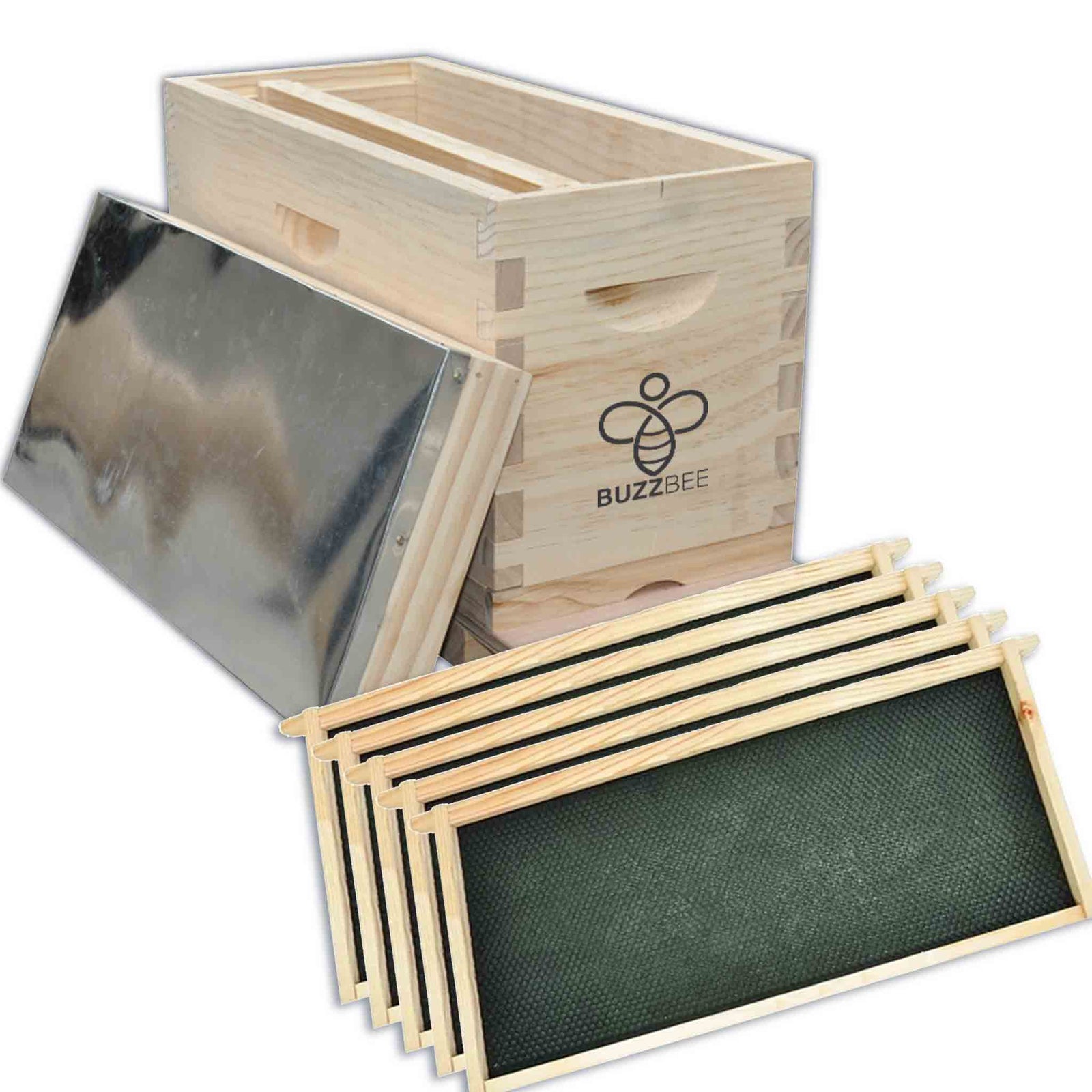Beekeeping requires a delicate balance to maintain healthy, productive hives. One of the biggest challenges beekeepers face is preventing swarming, a natural process where a portion of the hive leaves to start a new colony. Swarming can lead to a significant loss of bees and honey production. In this blog post, we share some information about swarming and bee bearding and detail some swarming bee prevention tips to protect your hive.
Why Swarming Happens
Swarming is a natural reproductive behaviour of bees that typically occurs in spring or early summer. When a hive becomes overcrowded, or the bees feel the queen is not performing optimally, they prepare to swarm. The queen and about half the worker bees will leave to form a new colony, leaving the original hive with a new queen. This process is crucial for bee reproduction in the wild, but it can be problematic for beekeepers.
Why Bee Bearding Happens
Bee bearding is when bees cluster outside the hive, often forming a beard-like shape. This behaviour is typically seen during hot weather and is the bees' way of regulating the hive temperature by reducing the number of bees inside. Unlike swarming, bearding is a normal and temporary behaviour and usually doesn't indicate any serious problems. However, it's important to ensure that your hive has adequate ventilation and space to prevent the conditions that could lead from bees bearding to swarming.
Tips for Preventing Swarming
Provide Adequate Space
Overcrowding is one of the primary triggers for swarming. Ensure your hive has enough space by regularly adding supers to the hive as your colony grows. This will provide more room for the queen to lay eggs and for bees to store honey, reducing the urge to swarm. Regularly check the hive so you can anticipate when more space will be needed.
Conduct Regular Hive Inspections
Frequent inspections can help you stay ahead of potential swarming. Check your hive every 7-10 days during the swarming season to look for signs of overcrowding and assess the general health of your hive. Early detection is key for swarming bee prevention, as it allows you to take preventative measures before it's too late.
Consider Replacing Your Queen
The queen plays a central role in the hive's decision to swarm. Young queens are less likely to induce swarming, so consider requeening your hive regularly. Replacing the queen every one to two years can maintain a strong pheromone presence and prevent the colony from feeling the need to swarm. If you notice your queen isn’t laying eggs efficiently, it might be time for a new queen.
Split the Hive
If your hive is growing rapidly, consider splitting it into two smaller hives. This involves taking some of the frames with bees, brood and honey and placing them in a new hive box with a new queen. This method mimics the natural swarming process but allows you to control and maintain your bee population without losing half your bees.
Provide Adequate Ventilation
Bees generate a lot of heat, and good ventilation is crucial to prevent the hive from becoming too warm, which can contribute to swarming and bees bearding. Ensure your hive has proper ventilation by using screened bottom boards and vented inner covers, helping to keep the hive temperature regulated and the bees comfortable.
Learn More Today
Swarming bee prevention requires a combination of proactive management and regular inspections to maintain a healthy hive environment. For more information on how you can protect your bees and enjoy a productive hive, Contact the experts at Buzzbee today.

